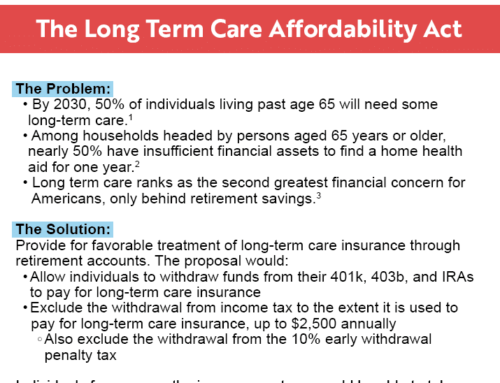
Modern Long-Term Care Insurance
The LTCi industry has experienced growing pains through its early decades. However, after more than 40 years these seem to be a thing of the past and the future looks very positive. Based on the factors listed below, the volatility of the past has been replaced with greater stability and certainty. Now is the perfect time to reevaluate (for both yourself and your clients) the need for protection against the rapidly growing expense of long term care.
Rate Increases
You have all heard, or experienced, horror stories about devastating increases in long-term care insurance (LTCi) premiums over the last few decades. Unfortunately many of these stories are all too real. When LTCi was introduced into the market a few decades ago there was no actuarial history and little or no regulatory authority. These limitations resulted in a great many improper assumption which resulted in unrealistic premiums that could not be sustained. This instability has caused many of you to neglect or at least postpone evaluating this critical protection for yourselves and your clients.
Take a second and consider the history of insurance… ancient Babylonians had a form of merchant marine coverage thousands of years ago. P&C has been with us since the Great Fire of London in the 1600’s and life insurance since the 1700’s. Given time and experience, actuaries have found the right combination of pricing and underwriting for modern LTCi plans. So, today the picture has dramatically improved. Add the clarification of terms, couple much needed oversight, and a mountain of uncertainty has been moved in the LTCi industry. A few legislative acts and insurance department regulations have resulted in better tax treatment, simplified claims, and significantly more rate stability.
Consumer Protection Through Legislation
The first major step toward improving the situation came with the HIPAA legislation in 1996. This federal legislation set guidelines for what constituted qualified LTCi. As a result policies were required to meet certain standards to become a qualified LTCi policy. HIPAA stated that benefits paid by a qualified LTCi policy were treated as reimbursement for health services and non-taxable up to the cost of services provided.
HIPAA also made very clear the triggers required for filing a claim. The two requirements to receive benefits are: (1) a plan of care prescribed by a licensed health care practitioner (i.e. your own doctor) and (2) and that the recipient be a chronically ill individual. HIPAA defined chronically ill to mean: (1) being unable to perform (without substantial assistance from another individual) at least two activities of daily living (activities of daily living are: eating, toileting, transferring, bathing, dressing and continence) for a period of at least 90 days due to a loss of functional capacity, or (2) requiring substantial supervision to protect such individual from threats to health and safety due to severe cognitive impairment. This clear definition has resulted in much easier and faster claims with negligible contestability.
Tax Qualification
An additional benefit of HIPAA is that it spelled out very specific guidelines for the tax treatment of LTCi premiums for both individuals and businesses. Potential tax deductions are available for everyone and are especially attractive for individual practitioners, small businesses, and C Corps. Many CPAs and some of their clients are qualified to treat LTCi premiums for themselves and their spouses as a pre-taxed business expense. Unlike long term disability (with tax advantages either coming or going) those who qualify, can deduct all or part of their LTCi premiums and still retain tax free benefits!
Rate Stability
In the mid 2000’s the Department of Insurance in many states issued new regulations spelling out very specific regulations concerning LTCi premiums and especially in regard to future premium increases. This was a direct reaction to the new Rate Stability Model outlined by the National Association of Insurance Commissioners (NAIC). Among these requirements is an actuarial certification containing a statement that the initial premium rate schedule is sufficient to cover anticipated cost under moderately adverse experience and that the premium rate schedule is reasonably expected to be sustainable over the life of the form with no future premium increases anticipated. If an insurance company request a rate increase on a policy approved after the date this model is adopted, the insurance company must submit a new actuarial certificate stating that under the new rates, which reflect moderately adverse conditions, no further premium rate schedule increases are anticipated. These increases must receive approval of the state insurance commissioner.
Learn More
If you would like to learn more, please call or email our office.



